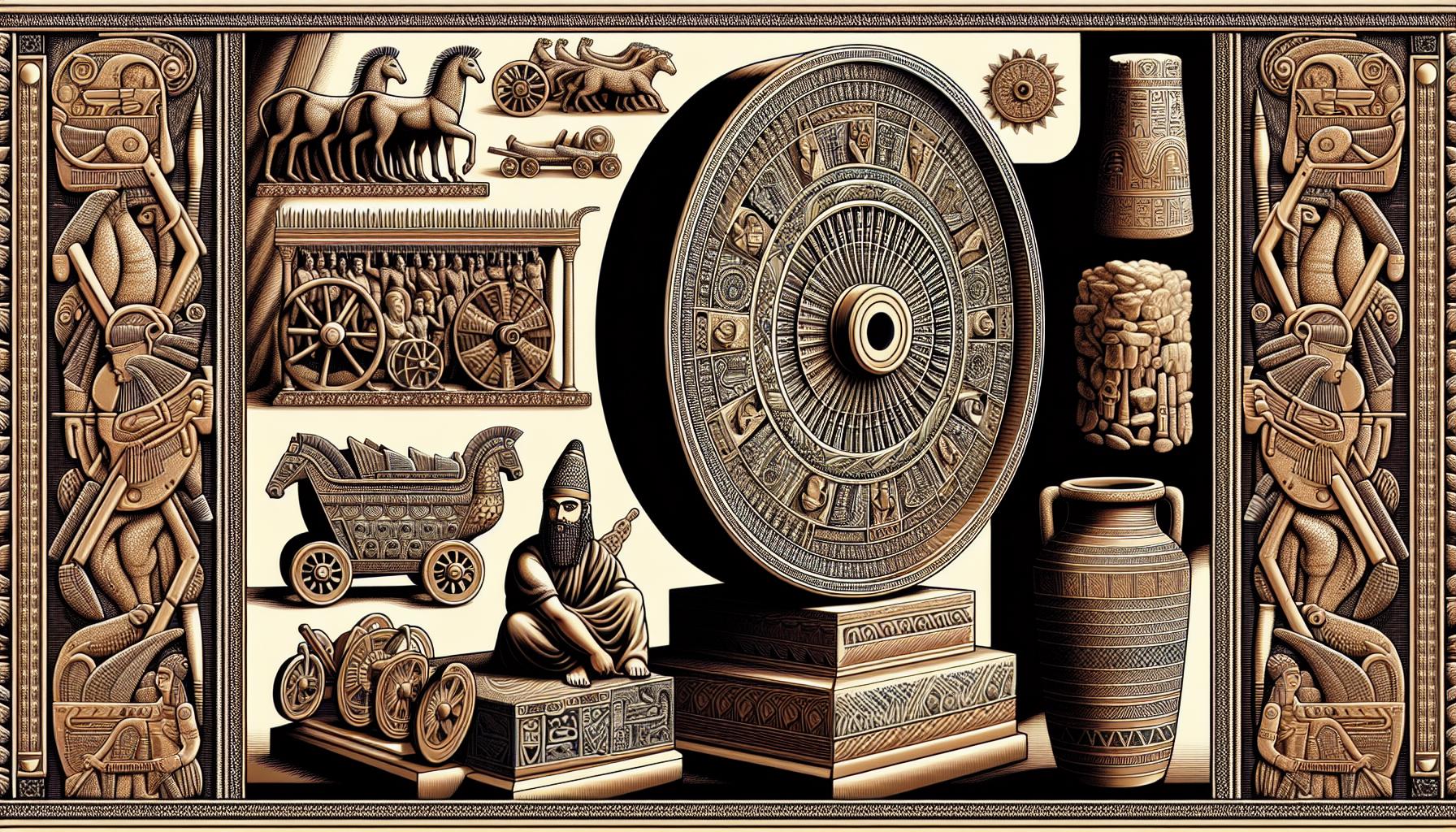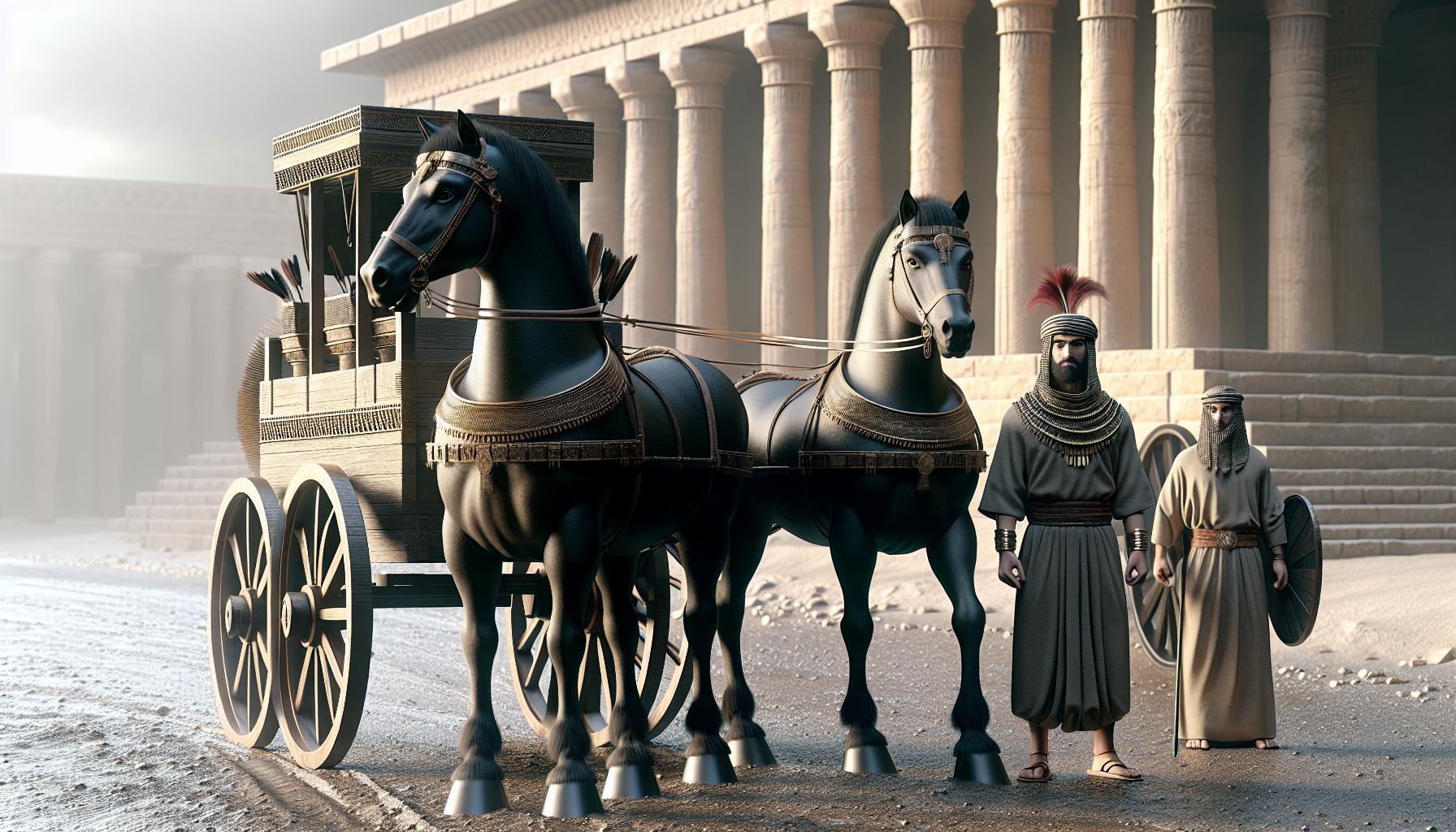Have you ever wondered how a simple yet revolutionary invention like the wheel came into existence? Imagine a world without wheels – no carts, no chariots, no bicycles. The history of the wheel is a fascinating journey that dates back thousands of years, shaping the way we travel and transport goods.
From its humble beginnings as a potter’s tool in ancient Mesopotamia to becoming a cornerstone of modern transportation, the wheel has undergone a remarkable evolution. Its origins reveal a blend of innovation, necessity, and human ingenuity. Exploring the origins of the wheel not only unveils the technological advancements of early civilizations but also highlights the profound impact this invention has had on shaping human progress.
Early Concepts of Transportation
Moving beyond Mesopotamia, early civilizations began to adopt the revolutionary concept of the wheel for transportation. Let’s explore how this invention transformed the way people traveled and carried goods in ancient times.
Ancient Innovations in Transportation
Mesopotamian Invention: The origins of the wheel as a potter’s tool in Mesopotamia marked a significant turning point in the history of transportation.
Sumerian Technological Advancements: Mesopotamian innovations paved the way for the development of wheeled vehicles, revolutionizing the movement of people and goods across vast distances.
Ancient Egyptian Wheel Usage: In ancient Egypt, the wheel found new adaptations and uses, particularly in the realm of chariot history and warfare.
Evolution of the Wheel in Early Civilizations
Mesopotamian Wheel Development: The advancement of wheel technology in Mesopotamia led to the creation of early wheeled vehicles, enhancing trade and communication among ancient communities.
Mesopotamian Wheel Innovations: Mesopotamian engineers continued to refine the design of the wheel, exploring new materials and techniques to improve its efficiency and durability for transportation purposes.
Ancient Wheel Materials: From wood to metal, early civilizations experimented with various materials to construct wheels that could withstand the rigors of travel and trade in prehistoric times.
Impact of the Wheel on Ancient Trade and Warfare
Wheel’s Role in Ancient Trade: The introduction of wheeled vehicles transformed the dynamics of ancient trade networks, allowing for the transportation of goods over long distances with greater speed and efficiency.
Ancient Wheeled Warfare: The utilization of chariots equipped with wheels revolutionized ancient warfare, giving military forces a significant advantage in combat and expanding the scope of conquest and empire-building.
Mesopotamian Wheel Symbolism: Beyond its practical applications, the wheel carried symbolic significance in Mesopotamian society, representing progress, power, and the interconnectedness of civilizations through trade and cultural exchange.
As early civilizations embraced the potential of the wheel for transportation, they laid the foundation for future technological advancements that would shape the course of human history and pave the way for modern modes of travel and commerce.
Evolution of the Wheel

Moving beyond Mesopotamia, early civilizations embraced the wheel, marking a significant advancement in transportation and trade. As ancient societies recognized the wheel’s utility, its evolution took shape across various regions with unique adaptations and innovations. Let’s delve into the unfolding of the wheel’s transformation through time and its profound impact on prehistoric transportation and engineering.
Mesopotamian Invention
The origins of the wheel trace back to ancient Mesopotamia, where it began as a simple potter’s tool. Sumerian technological advancements paved the way for the development of the first wheeled vehicles, revolutionizing the concept of transportation and trade in the region.
Ancient Engineering Marvels
Mesopotamian wheel archaeology reveals the intricate designs and materials used in crafting wheels during that era. The discovery of Mesopotamian pottery wheels showcases the early experimentation with wheel technologies, highlighting the engineering prowess of ancient civilizations.
Egyptian Chariot History
In ancient Egypt, the adoption of wheeled vehicles, particularly chariots, played a crucial role in military strategies and transportation systems. The Egyptian wheel adaptations further diversified the use of this innovation, enabling efficient movement and communication within the empire.
Mesopotamian Wheel Innovations
Mesopotamian wheel diffusion to neighboring regions facilitated the spread of this groundbreaking technology, influencing the development of early wheeled vehicles across ancient societies. The wheel’s symbolic significance in Mesopotamian culture emphasized progress and interconnectedness, shaping the narrative of technological evolution.
Wheel’s Impact on Ancient Civilizations
The wheel’s role in ancient trade networks cannot be overstated, as it facilitated the exchange of goods and ideas, fostering economic growth and cultural exchange. From Mesopotamian inventions to Egyptian adaptations, the wheel propelled advancements in transportation and engineering, leaving a lasting legacy on early civilizations.
By exploring the evolution of the wheel from its humble beginnings as a potter’s tool to a symbol of progress and innovation, you gain insight into the transformative impact of this ancient invention on prehistoric transportation and engineering marvels.
Impact on Society and Technology
After delving into the origins and evolution of the wheel, it’s clear that its impact on ancient civilizations was profound, shaping both society and technology in significant ways. Let’s explore how this prehistoric invention revolutionized various aspects of life during that period.
Transformation of Transportation Systems
The introduction of wheeled vehicles, such as chariots, marked a pivotal moment in prehistoric transportation. Mesopotamian innovations in wheel technology not only facilitated the movement of goods and people but also transformed trade routes and expedited communication between regions. The adoption of wheeled vehicles revolutionized ancient transport networks, laying the foundation for future advancements in mobility.
Advancements in Warfare
Ancient wheeled warfare, particularly the use of chariots, represented a strategic leap in military tactics. The maneuverability and speed of chariots on the battlefield reshaped ancient warfare, providing military forces with a significant advantage in combat. Mesopotamian and Egyptian chariots became symbols of power and dominance, influencing the outcomes of battles and conquests during that era.
Cultural Exchange and Communication
The wheel played a crucial role in fostering cultural exchange and communication among ancient civilizations. The ease of transporting goods and ideas across vast distances promoted interaction between diverse cultures, leading to the exchange of knowledge, beliefs, and technologies. The wheel acted as a catalyst for cultural diffusion, enriching societies with new customs and practices.
Economic Growth and Trade Networks
The integration of wheeled vehicles into ancient trade networks revolutionized economic activities and stimulated commercial exchanges. Mesopotamian pottery wheels and other wheel-based technologies enabled the efficient production and distribution of goods, fueling economic growth and prosperity. The wheel’s role in enhancing trade routes contributed to the flourishing of ancient civilizations and laid the groundwork for future economic developments.
Technological Legacy and Engineering Innovations
The legacy of the wheel in ancient societies transcended mere transportation, influencing subsequent engineering marvels and technological advancements. Mesopotamian wheel innovations not only revolutionized pottery-making techniques but also inspired the development of more complex machinery and tools. The wheel set a precedent for innovative solutions in engineering, serving as a testament to the ingenuity and creativity of ancient civilizations.
Challenges and Controversies
When it comes to the origins of the wheel, there are several challenges and controversies surrounding its history and development. Here are some key points to consider:
Mesopotamian Invention: The wheel is often attributed to ancient Mesopotamia, but the exact timeline of its invention remains a topic of debate among historians and archaeologists.
Prehistoric Transportation: Scholars continue to discuss how the wheel’s introduction impacted prehistoric transportation methods, with some questioning its immediate relevance to early societies.
Ancient Engineering Marvels: The wheel’s integration into ancient engineering marvels raises questions about the technical expertise of early civilizations and the extent of their knowledge in shaping this innovative technology.
Sumerian Technological Advancements: The role of Sumerians in refining and disseminating wheeled vehicles prompts discussions on the technological advancements of this ancient civilization and their contributions to transportation history.
Egyptian Chariot History: Controversies exist regarding the exact influence of the wheel on ancient Egyptian chariot history and the extent to which it revolutionized Egyptian warfare tactics.
Mesopotamian Innovations: The debate over Mesopotamian innovations extends to the wheel’s development, with varying theories on how this invention emerged and spread throughout the region.
Earliest Wheeled Vehicles: The identification of the earliest wheeled vehicles and their purposes is a subject of contention, as scholars seek to uncover the specific uses and societal impacts of these early modes of transportation.
Ancient Egyptian Wheel Usage: The utilization of wheels in ancient Egypt raises questions about their functional significance and the ways in which they were integrated into daily life and monumental construction projects.
Mesopotamian Pottery Wheels: Some studies suggest that the wheel initially appeared as a pottery tool in Mesopotamia, leading to debates on whether its initial purpose was utilitarian or if it was conceptualized for broader applications.
Mesopotamian Wheel Diffusion: The diffusion of the wheel from Mesopotamia to other regions is a topic of interest, with discussions on the mechanisms through which this technology spread and its influence on neighboring cultures.
Ancient Wheeled Warfare: The impact of wheeled vehicles on ancient warfare remains a controversial subject, as historians analyze the effectiveness of chariots and other wheeled military assets in battle scenarios.
Conclusion
The origins of the wheel are deeply rooted in the history of ancient civilizations, particularly in Mesopotamia. Its evolution from a basic tool to a transformative invention shaped the course of transportation, trade, and warfare. The symbolic significance of the wheel in Mesopotamian culture underscores its importance in societal development. Despite debates and controversies surrounding its inception and development, the wheel’s impact on military strategies, economic growth, and technological progress cannot be understated. The adoption of wheeled vehicles revolutionized ancient societies, paving the way for advancements in engineering and transportation systems. The legacy of the wheel continues to resonate through the annals of history, symbolizing innovation and progress in human civilization.
Frequently Asked Questions
When was the wheel first invented and where?
The wheel was first invented around 3500 BC in ancient Mesopotamia.
What was the symbolic importance of the wheel in Mesopotamian culture?
The wheel symbolized progress, movement, and advancement in Mesopotamian culture.
How did the adoption of wheeled vehicles impact ancient civilizations?
Wheeled vehicles like chariots impacted military strategies, transportation systems, trade, and technological advancements significantly.
What are some controversies surrounding the invention and development of the wheel?
Debates include the timeline of the wheel’s invention, its relevance to prehistoric transportation, and the Sumerians’ role in refining wheeled vehicles.
What was the initial purpose of the wheel in ancient civilizations?
Initially, the wheel served as a tool in pottery making in ancient civilizations.
How did the wheel influence ancient warfare?
The adoption of wheeled vehicles had a significant impact on ancient warfare by enhancing mobility and military tactics.
